Ganvié is one of the most iconic towns in Benin. The reason? Well, it is a floating town built on the waters of Lake Nokoué, a short distance from Cotonou. They say that Ganvié is the African Venice, although we dissertate and we could say that Venice is the European Ganvié. It all depends on what vision we see it from, doesn’t it?
This floating village was founded by the Tofinu people of southern Benin in the 1600s. These escaped from the warriors of the Fon people of the great kingdom of Dahomey. They captured people from other tribal groups and sold them as slaves to the Portuguese. According to their religious beliefs, Lake Nokoué was considered a sacred and magical lake, and because of this, the Tofinu people found a great opportunity to take refuge there from this feared group. He decided to settle in the waters of Lake Nokoué and thus avoid being captured by the warriors. Once the first houseboats were built, they decided to name that town Ganvié, which in its local language, means “freedom in water”.
Once the slave trade ended and the Kingdom of Dahomey fell, conflict between Benin tribal groups decreased. However, despite the fact that the Tofinu population was no longer threatened, the original inhabitants and their descendants chose to stay in their lake houses and make a living there. Over the centuries, Ganvié has grown and is now a city of about 40,000 people living on the water of Lake Nokoué. There, there are hospitals, schools, churches, and markets; but instead of motorcycles and cars, we find many canoes that are the usual means of transport among the inhabitants of Ganvié.
Today, much of the local population lives by fishing in the lake. They have developed small fences over the water to raise fish and catch them, and then all this fish is sold in the main markets of Cotonou, which is a relatively short distance away. Tourism is gaining more and more presence, but especially in visits organized during the day from Abomey or Cotonou. In this case, the local population does not receive much money. On the other hand, if you stay overnight in some of the accommodations that are brought by the inhabitants of the city, you will surely enjoy this experience and lend a hand to the local economy. We did, and it was one of the most magical experiences we had during our trip to Benin.
How to get there?
To get to Ganvié, it will be essential to use one of the maritime transports in the area, which are mainly made up of motorized wooden canoes. Many people visit Ganvié for a day from Cotonou. To get there, you must first go by car to Abomey-Calavi (not to be confused with the town of Abomey) and from its pier, take one of the tourist boats that leave to visit this beautiful floating village. The visit usually lasts about 3-4 hours and includes a guide in French or English who will explain the curiosities of this floating town. We did not take this option, but it is the one that most tourists who only have one day to see Ganvié do. Prices are negotiable, and for different traveler experiences range between 12,000 – 20,000 CFA per person.
We decided to stay overnight in the floating village of Ganvié, an option very little known to many travelers. And so, since we had time, we decided to take the public transport that local people take to go to this floating village and that leaves from the Dantokpa market.
After asking several people, they told us that around 12h-13h of noon a canoe leaves that goes from Cotonou to Ganvié with all the people returning from the market. The departure point is just north of the Dantokpa fetish market area, by the river. There, you will find many boats parked with people inside who go to different villages on Lake Nokoué. If you ask, there is a public boat that leaves for Ganvié. Beware that many people will want you to take a private boat… But if you have patience and time, you can take the public boat that cost us 500 CFA per person on a 1-hour journey that takes you to the floating village of Ganvié.
These are the only options to reach this floating village, as it is surrounded by the waters of Lake Nokoué and therefore its access by car is totally impossible.
What to do in Ganvié?
Ganvié is a floating village on Lake Nokoué that has different activities to do such as:
– Take a canoe tour through the streets of Ganvié
Not every day you are in a floating village, so one of the main activities to do is to take a canoe and walk the streets of this town. You can take a motor canoe and pass through the water-filled avenues, as well as see the houses that are built on logs that are nailed to the water of the lake. There, you will see the daily activities of its inhabitants and you will be able to discover very special corners.
If you want, instead of a motor canoe you can take a canoe paddling, like most canoes in the locals that tour Ganvié, and greet the locals and see different types of canoes: those where there are children returning from school, those who load logs and carry them up and down, Those that sell groceries or those that serve to go from one point of the town to another. We paid 1,000 CFA per person for a one-hour tour of the streets of Ganvié in a paddle canoe.
In Ganvié, you’ll have to keep an eye on photography. Being a floating town and very visited touristically, local people are not very open to the subject of intrusive photographs. That is, do not go with the camera and take close-ups of a person or a situation without first interacting. Think that you are at home and, therefore, you will do well to ask permission or to have a conversation with them before taking some photographs that will surely be a good memory. Although the canoe ride through Ganvié is one of the most special experiences you will have from your trip to Benin…
– Watch the day go by in Ganvié
Ganvié is a town that receives many tourists, but from the afternoon, the movement of visitors decreases significantly. Therefore, it is a good time to observe how the local people return home with their canoes and how the day goes by in this beautiful floating village.
We, when sleeping right there, were able to be in a small hut nailed to some logs from where a panoramic window we could observe the movement of the canoes that passed in front of us… We stood for a couple of hours before dinner watching the day-to-day routine in Ganvié.
In front of us, for example, we had a drinking water station, where people, with their canoes, queued up to get water. Other canoes also passed by and greeted us when they saw us sitting there watching the boats pass through Ganvié; and we took advantage of the sunset camouflaged among high clouds to enjoy a moment of tranquility between the sway of the canoes and its people.
– Discover its floating market that takes place every morning in its waters
Every morning, very early, a very special activity happens in Ganvié: a market that begins at dawn and where women who go with their canoes sell food and food to fishermen who start their long working day.
This activity begins in the wee hours of the morning, when it is still dark, and where you can see the women with kerosene lights who begin to sing and shout what they have in their canoes. Little by little, other canoes are approached with fishermen and people who go to the city, and they stop to buy the groceries they sell.
The tranquility of the water, the stillness of the night and the silence of the town slip between the first songs of the vendors and the first canoes that wander through the water. Kerosene light slowly turns off with the first rays of dawn light and activity increases as the first hours of the day progress.
When we slept in Ganvié, we woke up still at night to stand in a corner of the avenue, and from there, in silence, observe this special market to see how it gets dawn in this floating town on Lake Nokoué.
– Visit the floating village of Aguegué
Aguegué is one of Lake Nokoue’s other floating villages that lies on the other end of Ganvié, right next to Porto Novo. Much smaller than Ganvié, we arrived when we left Ganvié on a long journey of about two hours by motor canoe. When you arrive in Aguegué you can see the houseboats on the water and how people have become accustomed to living in such an environment. Many work in fishing but, unfortunately, due to biological and environmental problems, such as Ganvié, their conservation is unknown. For more information, you can read the article from Porto Novo where you will find information about this floating town.
Where to sleep in Ganvié?
Ganvié is one of Benin’s most popular destinations. Many people visit it for a day from Cotonou, but we recommend that you stay overnight in the floating village to live the daily life of Ganvié, an experience you will not usually live. For this reason, the best accommodation to stay in Ganvié is:
– Chez M: This is where we slept during our stay in Ganvié. It is a floating accommodation located in the center of Ganvié and has tables from where you can see what we called “window of the world”, a place from where you could see how the canoes were moving from one side to the other. Don’t expect much comfort in the rooms, but keep in mind that you’re on a floating village. They also have a restaurant where they cook you some very good meals and Andrea and Isabel are very good hosts. From there, they can book you canoes to go see the market, take a tour of Ganvié or even go to Aguegué. One of the best accommodations to stay in Ganvié. We paid 4,000 CFA per person. For more information, you can contact them at +229 97 37 22 71.
Our route
DAY 1: After the arrival of Xoli, a friend who came to see us 2 weeks during our trip to Benin, we prepared our backpacks to make a 3-day miniroute around the northern area of Cotonou, where we would visit Ganvié and spend the night, and the next day we would go to Porto-Novo passing through Aguegué, to return again later to Cotonou and start a new route through the center of the country.
At Haie Vive Guesthouse we left part of our luggage and started this route by taking a Zem, the taxi-motorcycle characteristic of Cotonou, which took us to the Dantokpa market, one of the largest markets in West Africa (if you want to know more, you can click here). There, the flow of people up and down, laden with goods, is breathtaking. Africa is trade and exchange, and this can be seen in the day-to-day activity of this open-air market located next to Lake Nokoué.
We went directly to the dock where we were told that the public boats going to Ganvié were leaving. Since we would stay overnight there, we had time to travel like the locals… And, really, that was a totally indigenous experience! On the shore, there were different boats that were filled with people who came from the market and left for different parts of the lake. We asked which one was leaving for Ganvié and after avoiding some who wanted us to go with them in a boat privately in order to pay more, a boy made us get into a boat where there were already some women, children and elderly people sitting waiting for the departure of the ship into the lake. That boat was going to Ganvié but now we had to wait for it to fill up completely to be able to go to one of the most special towns during our trip to Africa.
We sat at the stern of the wooden boat, on a small wood that served as a seat, and next to other boats that were also full of people. One of the most curious facts was the decoration of these naves, which were painted with all kinds of drawings. Some set sail from the dock, but immediately a shout from the ground brought them back to load new passengers or goods who wanted to board the ship, and others waited their turn to find a parking lot.
The wait was long… Over a couple of hours ago, where we killed time talking to the people next door, greeting the kids who were surprised to see 3 whites there in the middle, doing magic tricks and watching the different day-to-day activities at the local dock in Dantokpa market. Street vendors who passed by selling different snacks, people loading goods from the market, others exchanging cefaes for Nigerian currency… At first, some told us that we had to pay higher prices and thus that person would earn a commission; but they stopped trying when they saw that we had no problem waiting and that, like them, we had all day to reach Ganvié, our final destination.
After a few hours, there were more movements in the ship than usual. Some shippers carried sacks and filled the boat and the last seats were occupied by people who wore colorful clothes… Clothes in Africa are bright and cheerful colors, an impressive range of colors that we are not used to at all. It is African elegance with beautiful models.
It seemed that now, yes, the boat was beginning to set sail, but we were advancing in the opposite direction to our destination. Surprised, people calmed us down and told us that they were going to first load more material to an area near the market… Even more stuff in this canoe? In Africa, all the space is used, and where there is room for five, ten can also fit. So, after taking a tour of the outside of the shore of the Dantokpa market, the captain began to speed the canoe and at a very pleasant cruising speed we started sailing towards Ganvié.
We were on starboard, located right in the bow and were the only ones wearing life jackets. They had been given to us by the crew, who, surprised by our presence, wanted to make sure that the targets arrived well at their final destination. The journey passed between calm waters where we could observe different waterfowl.
After a while sailing around this sacred lake, we began to glimpse the end of the lake. The first canoes with fishermen appeared, and also the first traps with sticks that existed in different areas to catch the fish that were still in that corner. Fishing there is the main source of wealth but, unfortunately, there is less and less due to the biological and climatic conditions of the terrain.
Ganvié was a unique village where an entire tribal group took refuge to escape their captors. Being a sacred lake that they could not cross, the only option was to build a village there and that is how these houses have still been maintained to this day. Upon arrival from the village, we began to see the first houses resting on logs that were nailed to the bottom of the water.
The public transport canoe began to make different stops and left us as a small square from where we tried to contact with our accommodation, which we still knew nothing about. After a while and talking to the people who were there surprised by our presence, a canoe arrived and came looking for us and took us to the accommodation that was located a few streets from there… But being water streets, it was impossible to access them on foot.
We arrived at the accommodation, located on a main street, and there we could discover the environment where we would spend the next hours. The lodging had like different houses: in one were the rooms that overlooked a window just above the lake water; in another was the place where the people of the accommodation lived and where they had the kitchen; in another they had an enclosure with souvenirs and souvenirs for tourists who stopped during the day to day during their visit to Ganvié; and in another house there were some tables and a viewpoint that we called “the window of the world”, the place from where all the movement of the people of Ganvié could be seen.
We had lunch there, at the table overlooking the main street of Ganvié, and our eyes were fixed on the different details of the canoes that passed in front of us. Some were beautifully decorated. Others wore children in uniforms that must have come from school. Some loaded parts to transport; and others stopped right in front of where there was a stop that, with a pump, pumped water (probably filtered) to fill the buckets that the canoes were carrying. It was quite a spectacle!
The colours of people’s clothes, their smiles when they discovered our presence, the captains paddling their canoe in the calm but saturated waters of Ganvié, the tourists passing by in motor boats… They were different chapters of a book written about a people who sleep on the waters of a sacred lake but, awake, there is a lot of life. In fact, sometimes there were holdups. Surely, it was like driving during rush hour but instead of on the asphalt, on the water of Lake Nokoué.
Afterwards, we decided to go and discover the small corners of this village in the company of two teenagers who acted as helmsmen of our canoe, and with two oars they took us through the streets of Ganvié. There, we were able to discover life in a floating village. The children greeted us from the windows with a mischievous smile, some women washed their clothes and others were already preparing food, we crossed paths in other canoes that would have to go home…
The architecture of the houses above the floating waters was striking. How could those stuck logs be the foundation of a house? These did not move and were well fixed in a set of logs that created a unique picture. Some were decorated and many had a window that looked directly over the waters of the streets of Ganvié, where, unlike many homes in our house, there were neither fences nor alarms… In fact, light was an unattainable commodity for many of those people who only had the help of different solar panels to charge their phones and appliances.
After that walk, we went back to the accommodation and didn’t leave there. We sat again in our “window of the world” to watch the day go out in Ganvié, and then we had dinner and went to bed early because the next day a very special activity awaited us: the visit to the morning market of Ganvié, one of the most beautiful experiences of our route through Benin.
DAY 2: Today the day started early. At 4 in the morning the alarm clock rang, and in complete darkness and with the light of our mobile phones, we left our accommodation to board a canoe that would take us to the morning market, one of the most special activities of this town.
Every morning, in Ganvié, different women stand in their canoes next to the main avenue and from there, they call and sing to sell their groceries and food to all the people who leave the village. Even in complete darkness, kerosene lights are marking a path over water and we, there, as extras, felt like the luckiest spectators in the world.
The first canoes began to arrive and stopped next to the vendors to make the first transactions. Tickets and bags of food were exchanged in a unique setting. The women’s songs seemed to announce the arrival of the first moments of natural light over the floating village. Then, more and more canoes full of people going through Cotonou passed in front of you, while we, cornered, continued to contemplate the beauty of this market.
The bright colors of their dresses, their voices, the smell of their food and the woods of the canoes in the gloom created a bucolic landscape of which you felt privileged to be a part. There, with our cameras and our eyes, hidden and huddled also by the cold early in the morning, we were able to witness the most special market in Ganvié.
There, at the market, we spent a couple of hours flying by for us. The women began to parade towards their homes after a day that, for them, had long since begun. The first tourists were starting to arrive, and we returned to the accommodation for breakfast after enjoying one of the most beautiful moments during our trip to Benin. A unique and unforgettable experience.
After breakfast, it was time to load all the luggage and say goodbye to the floating people, the African Venice (or the African Ganvié). A two-hour drive awaited us on Lake Nokoué, which we had to cross from west to east, in order to reach the vicinity of Porto Novo and Aguegue, our next destination. Along the way, we were able to continue observing how that lake that had served as a refuge for many villages during the tribal conflicts of the past was still a refuge for many people who lived there, working in its waters, living in its houseboats or traveling to Cotonou, the largest mainland in Benin. A lake that has not yet lost its essence and a unique town where we could sleep on its waters…

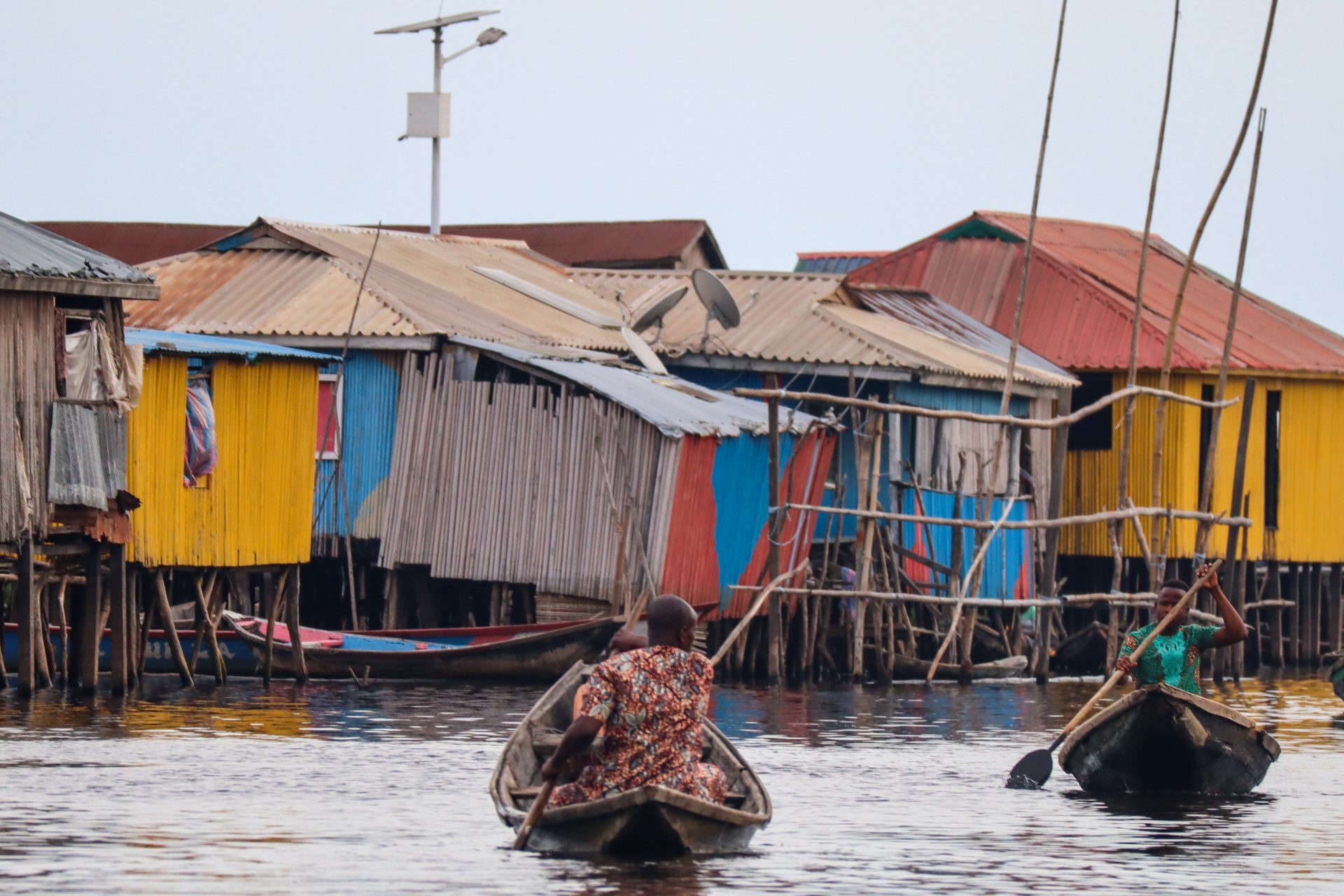


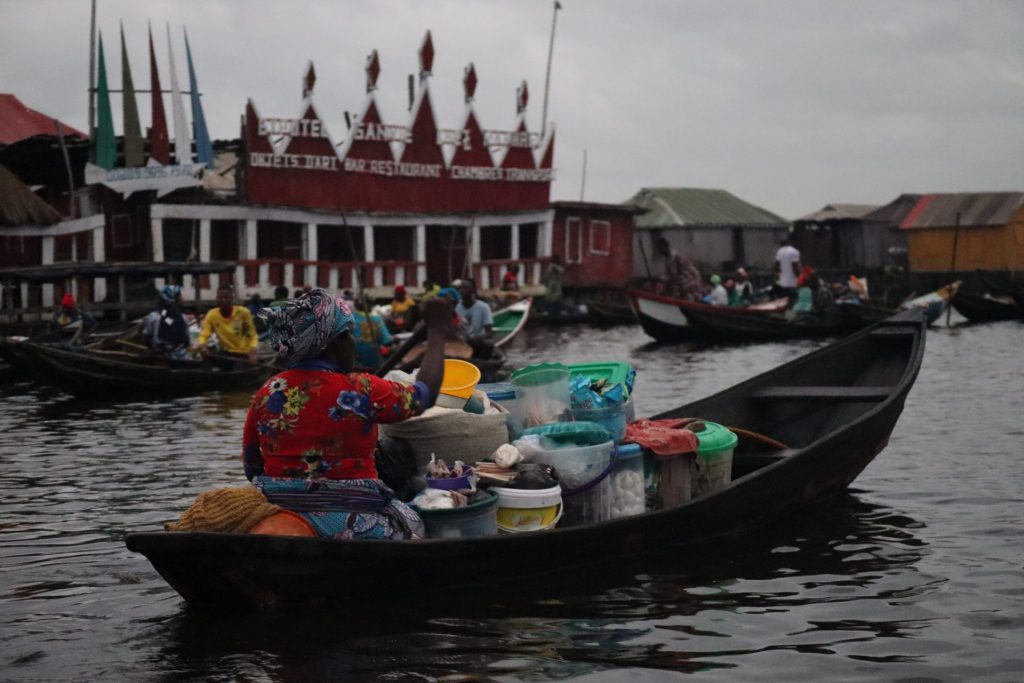

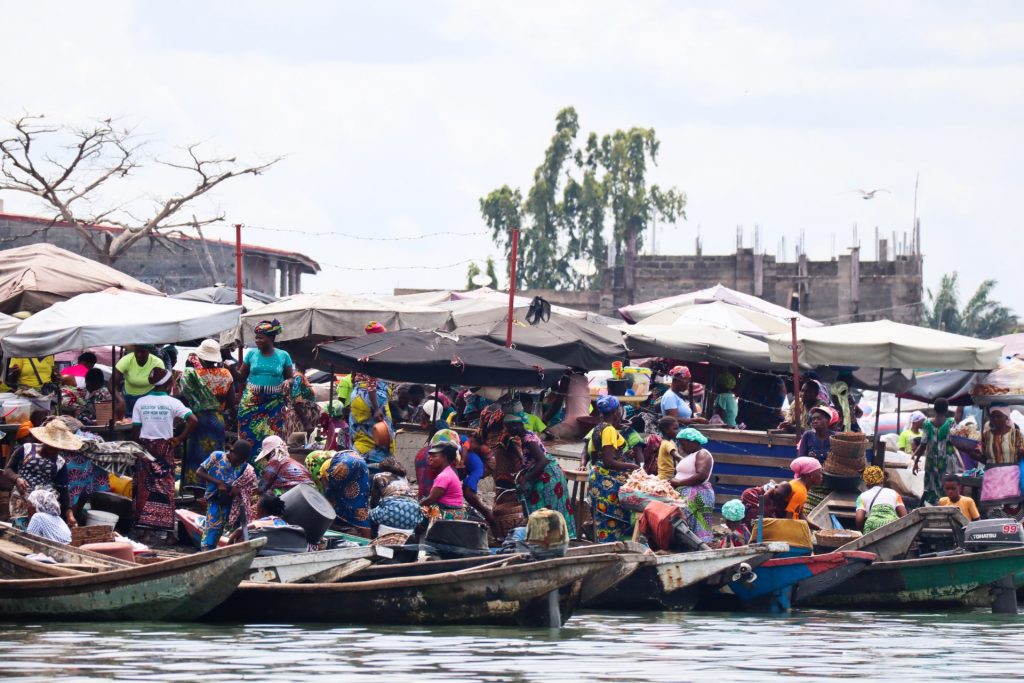
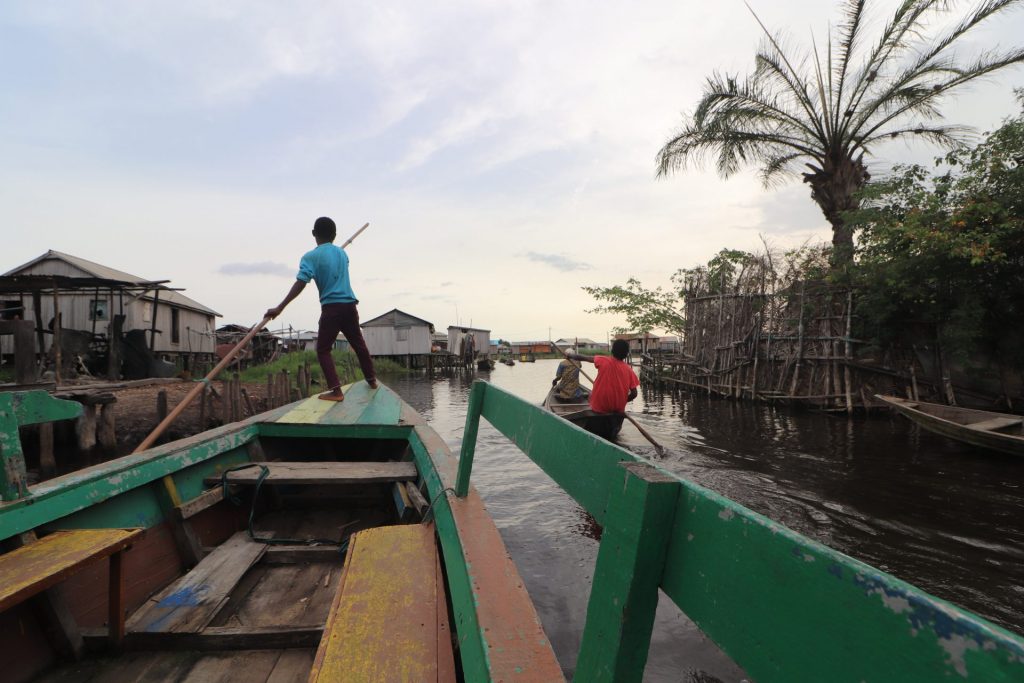
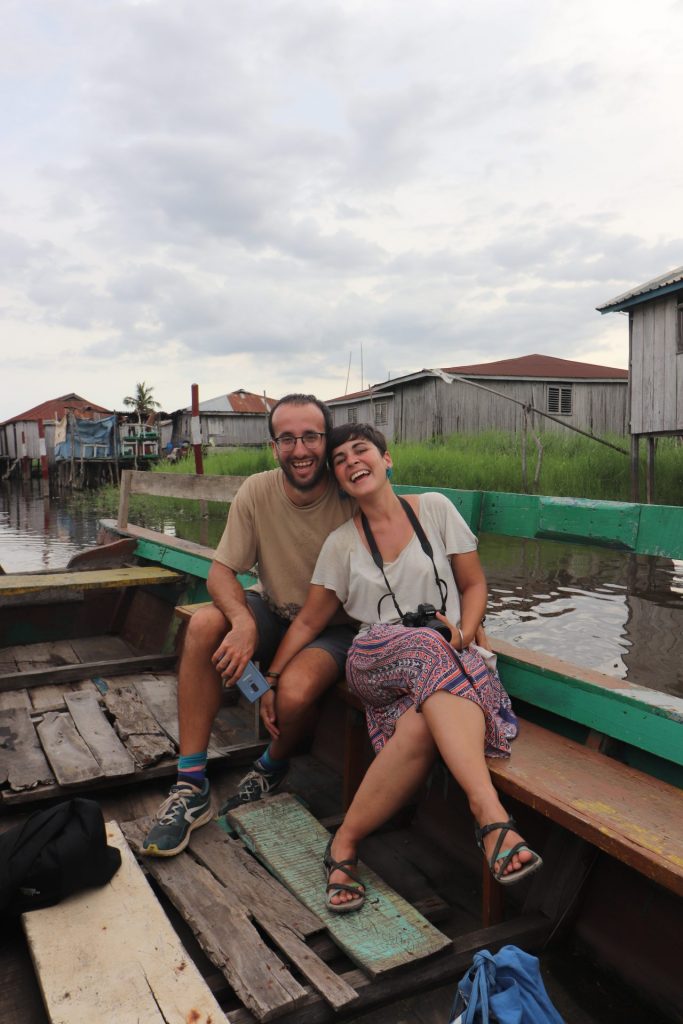
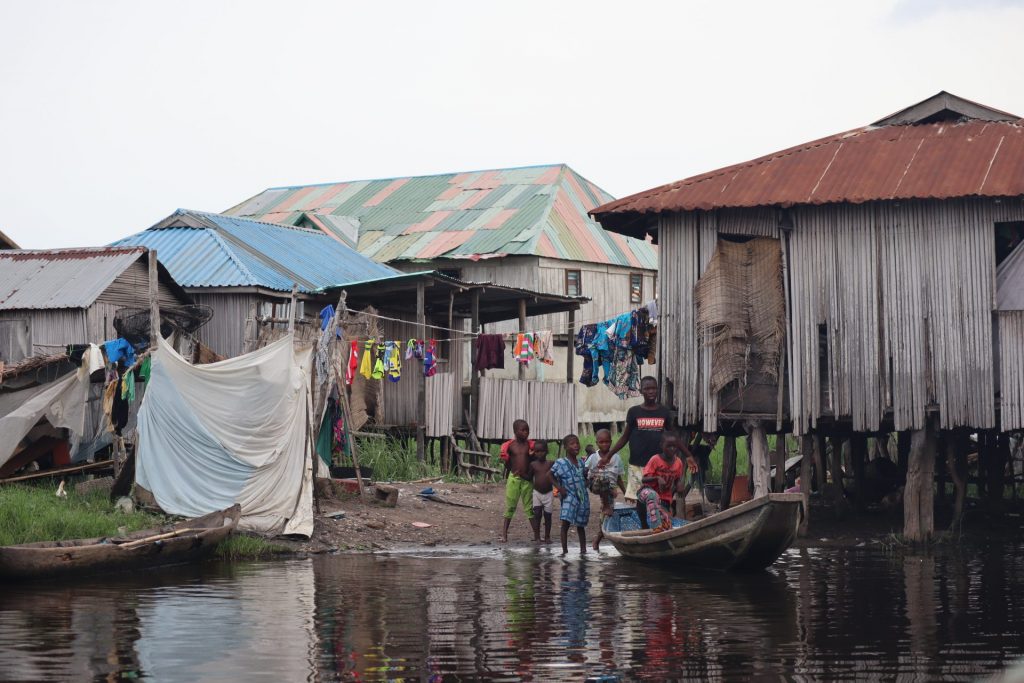
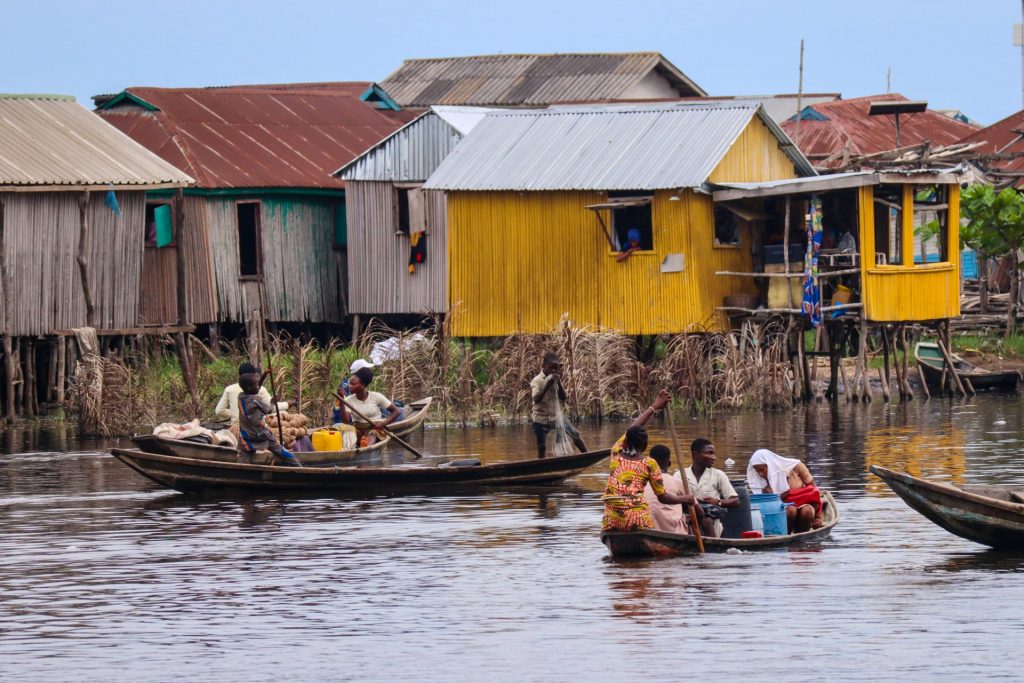









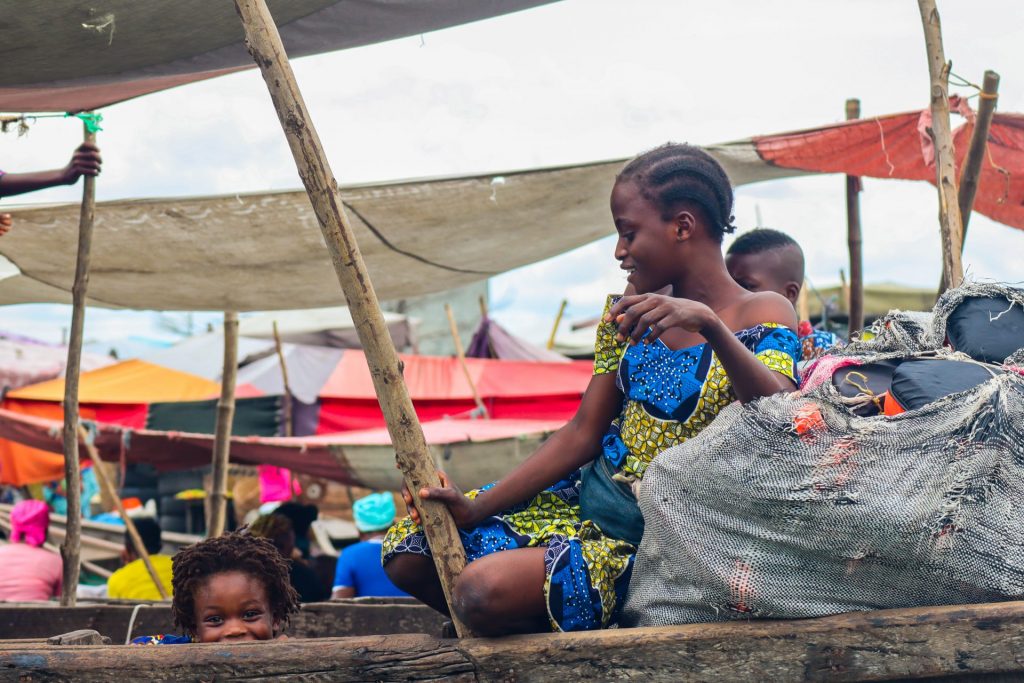

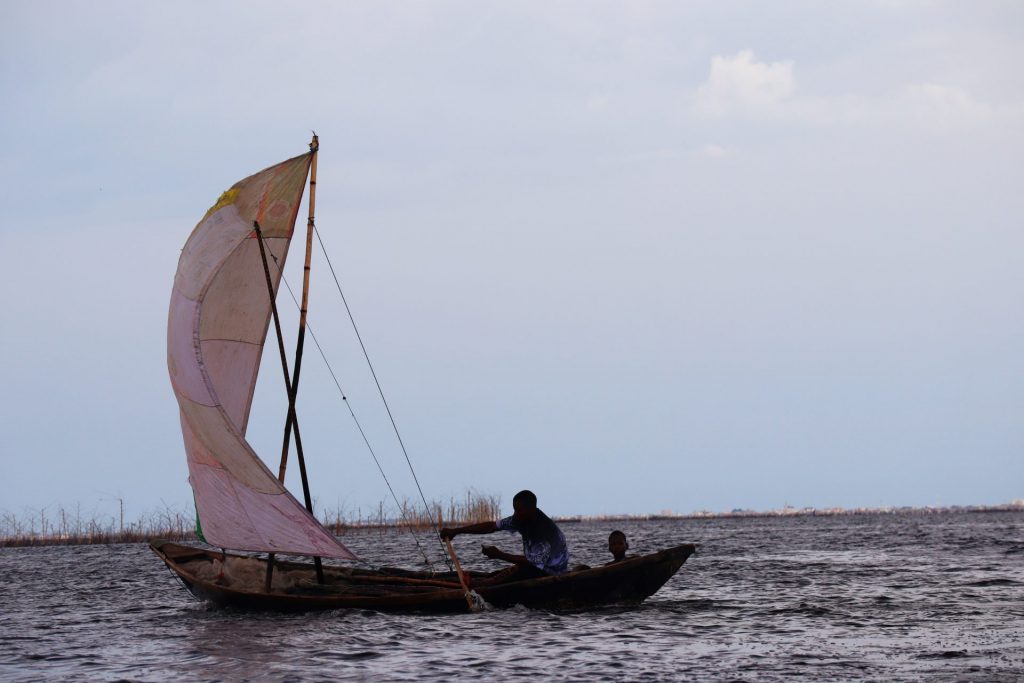

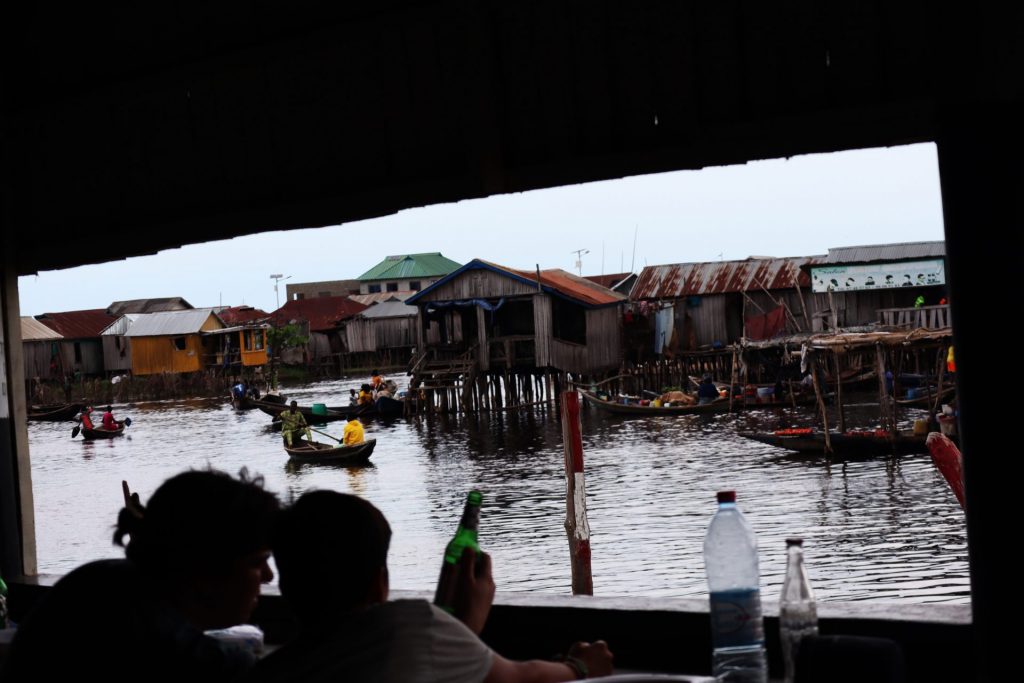


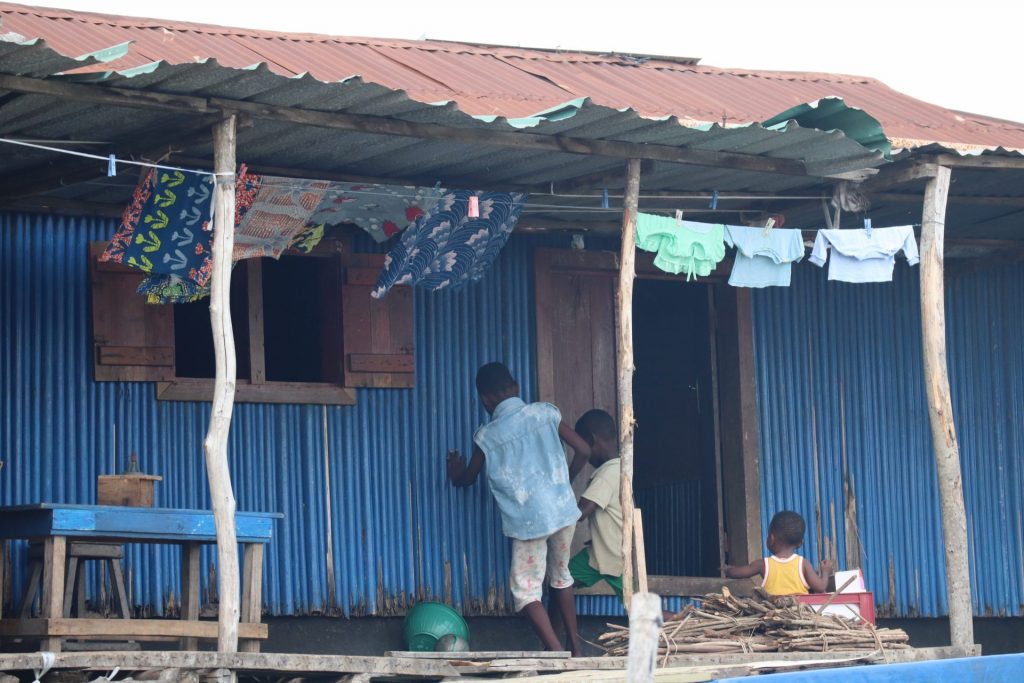
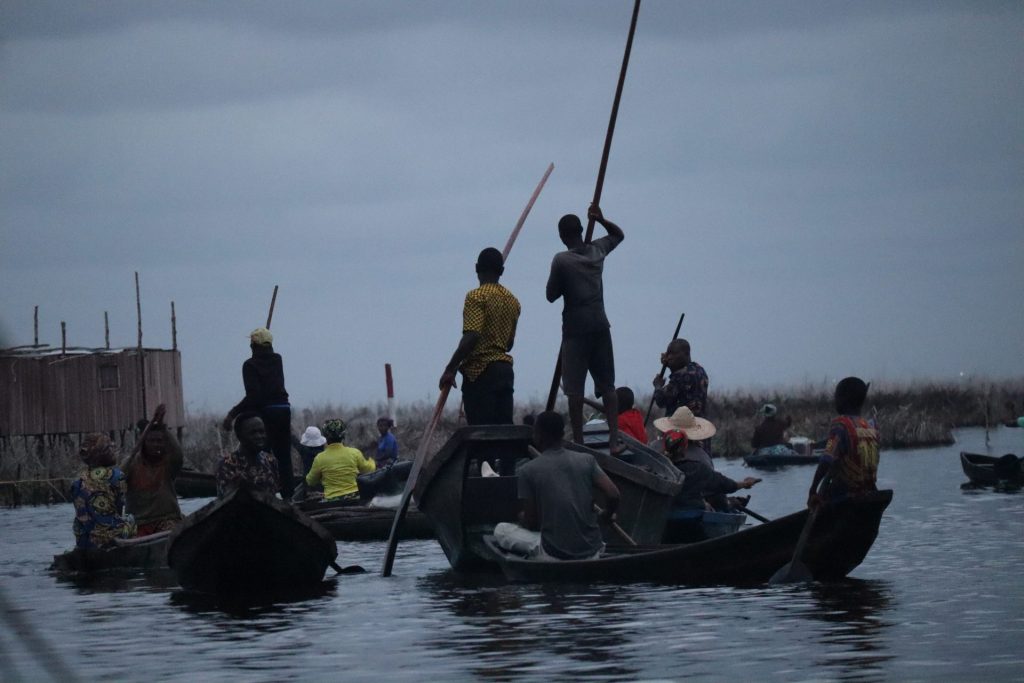



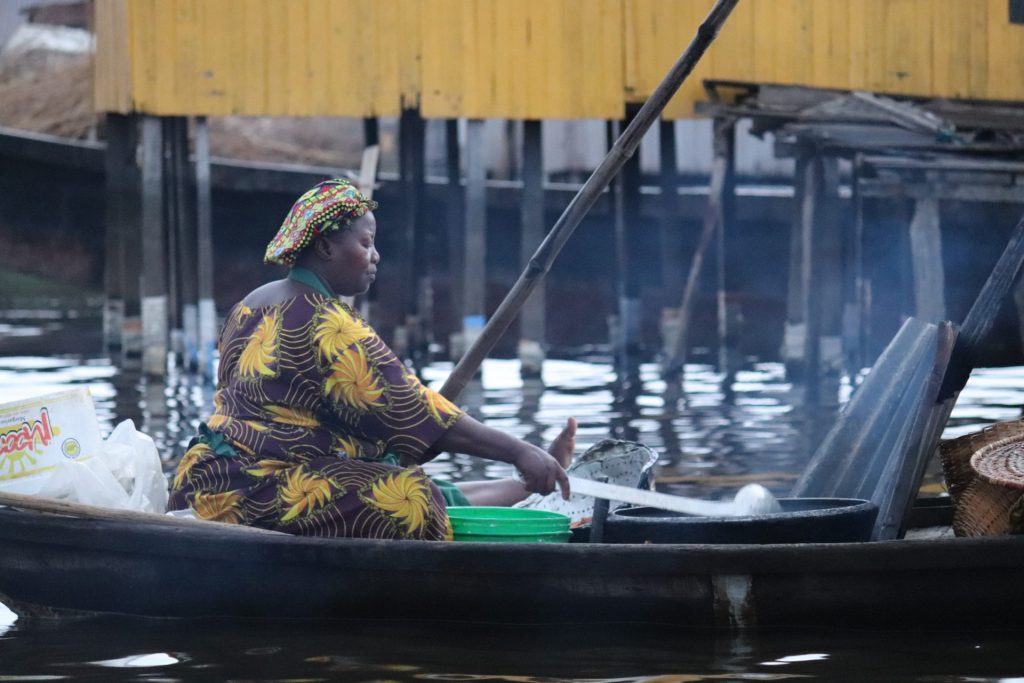



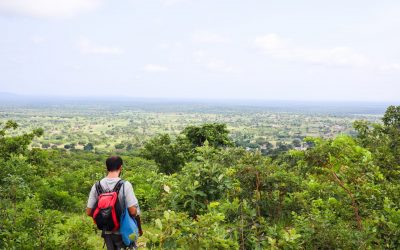

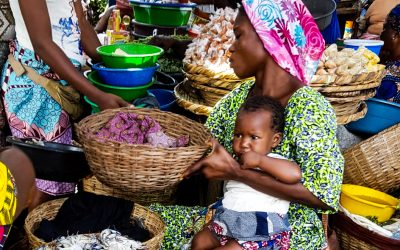
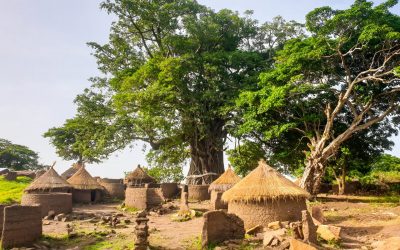

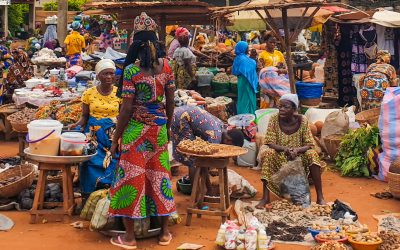
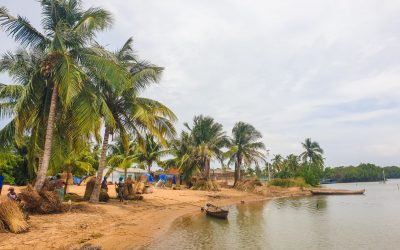
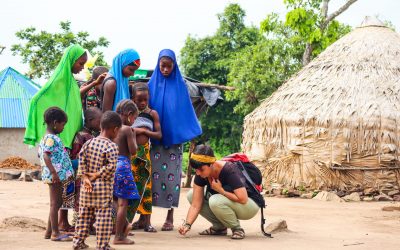
0 Comments